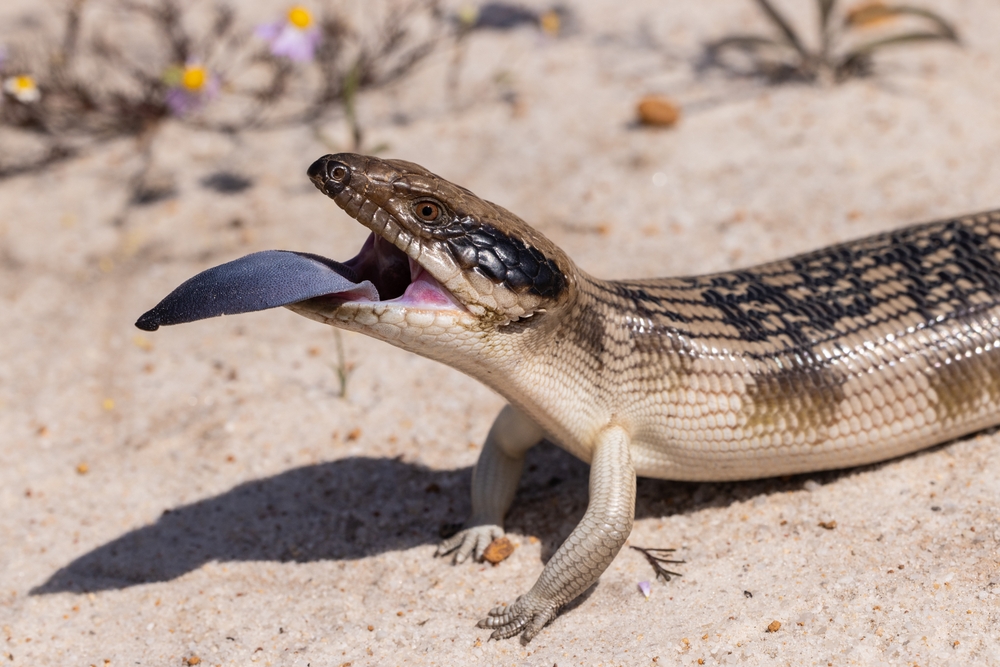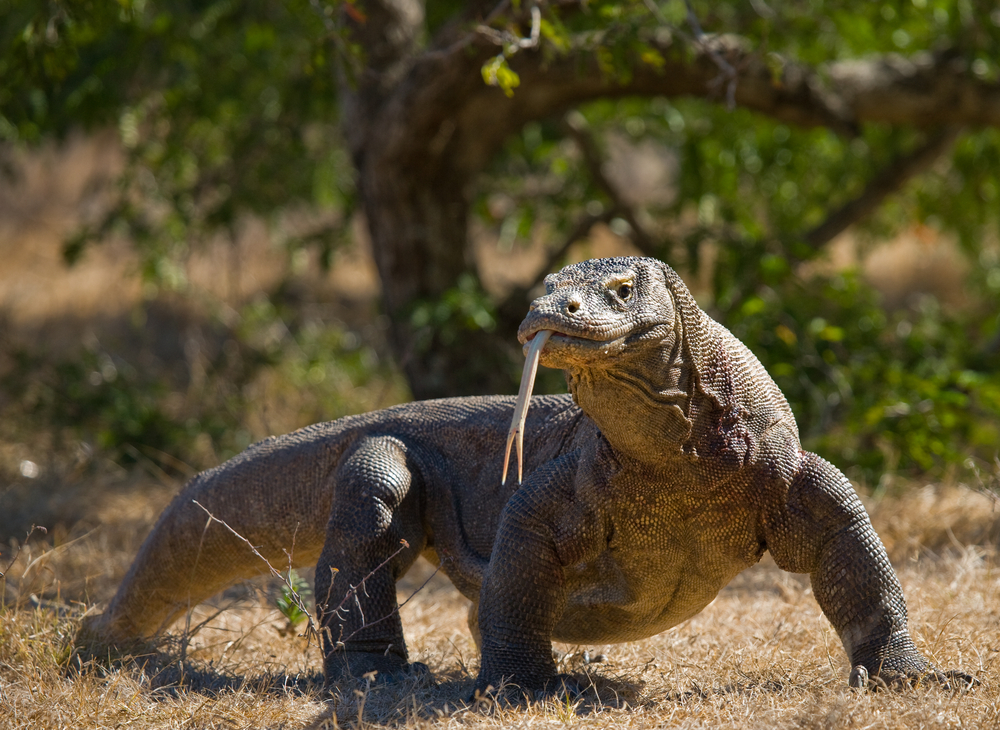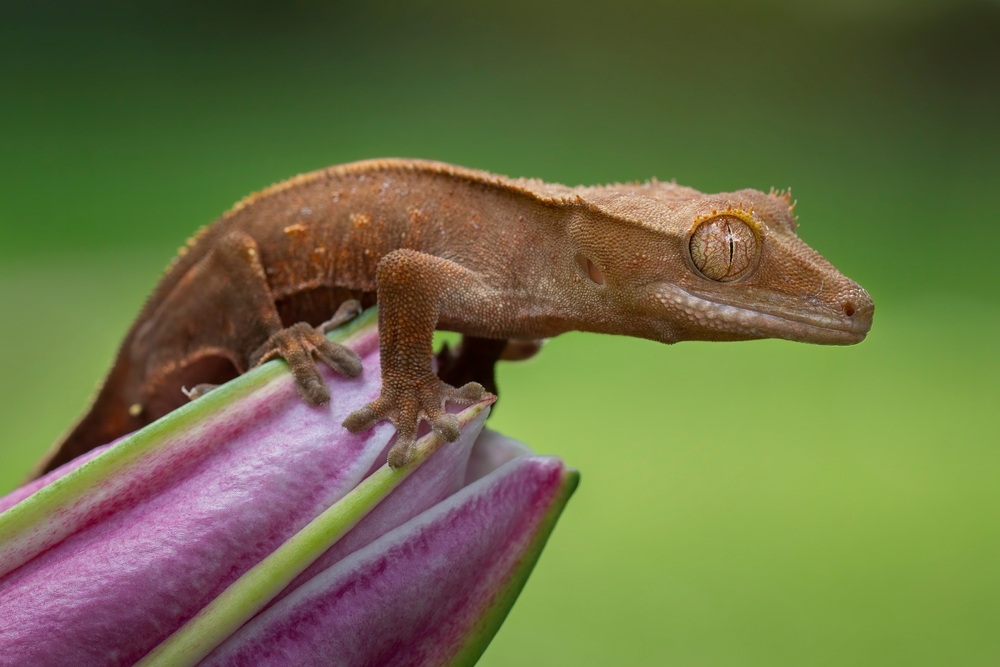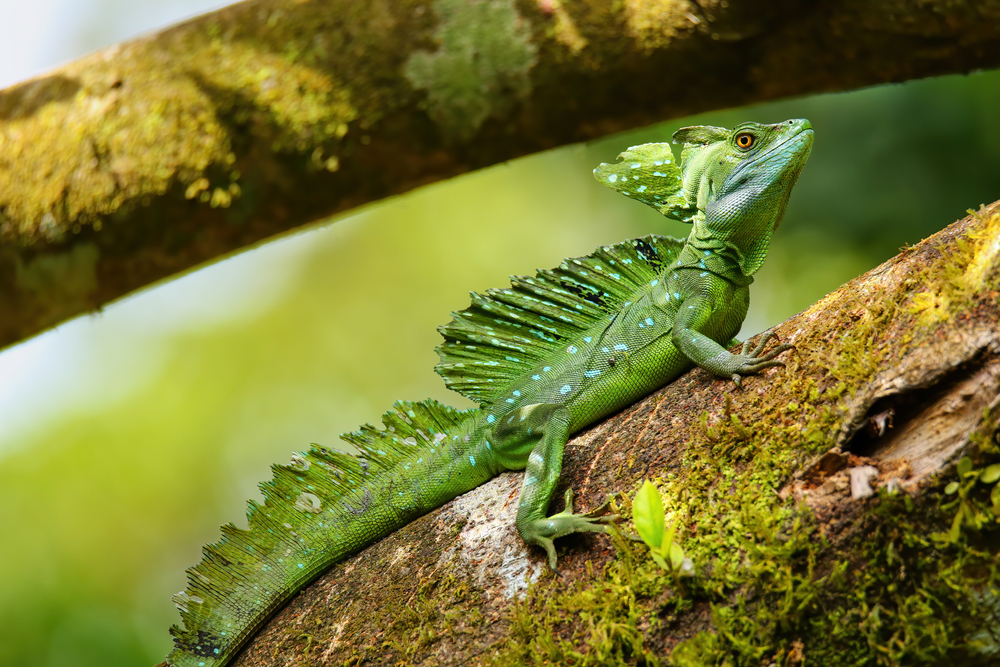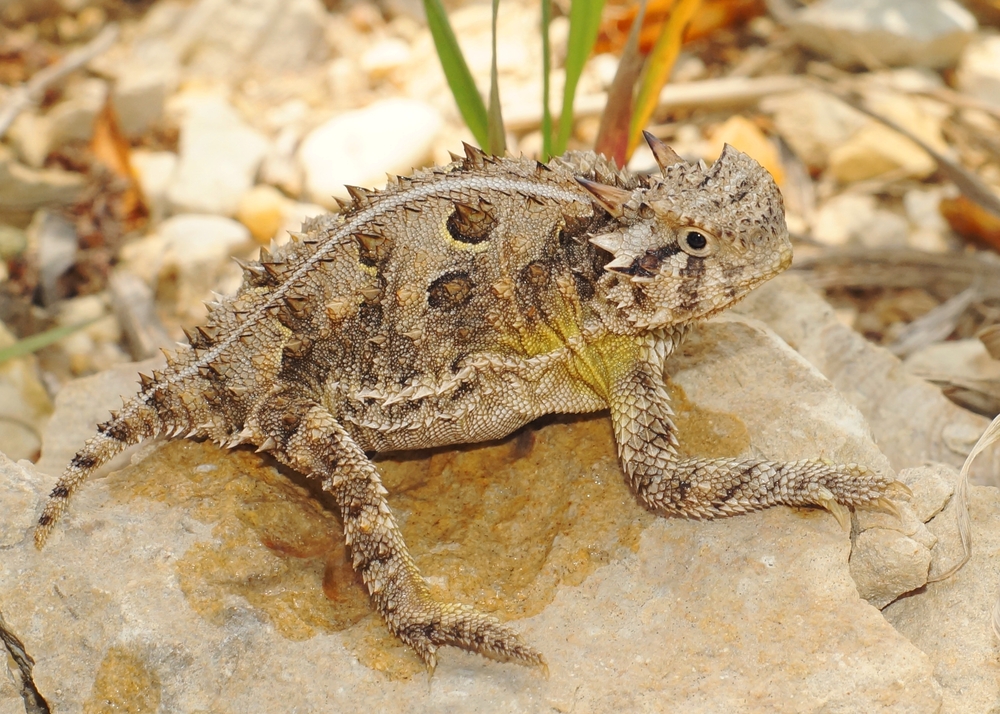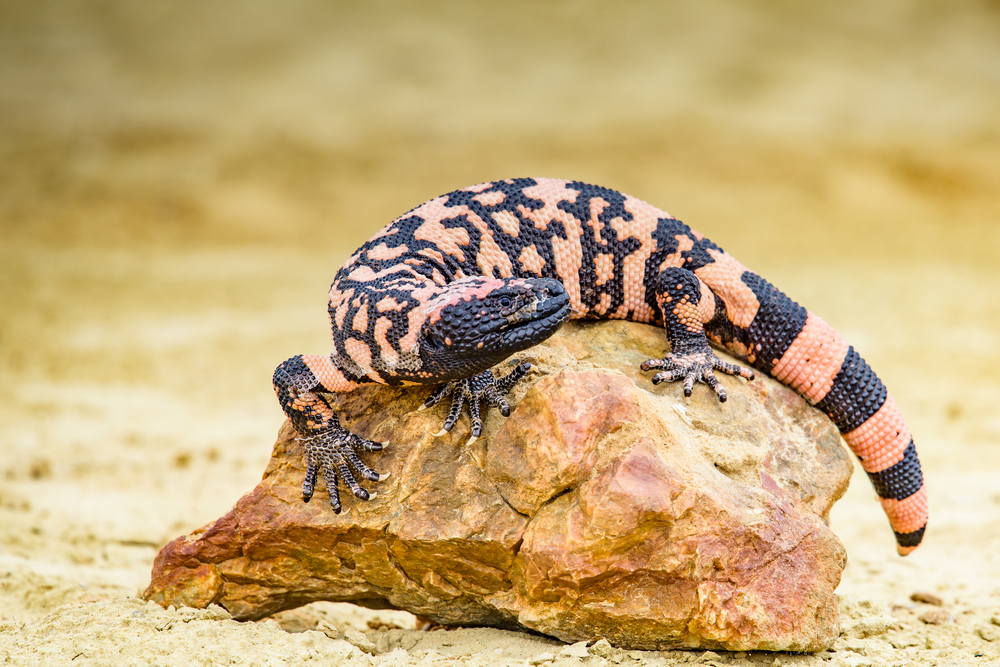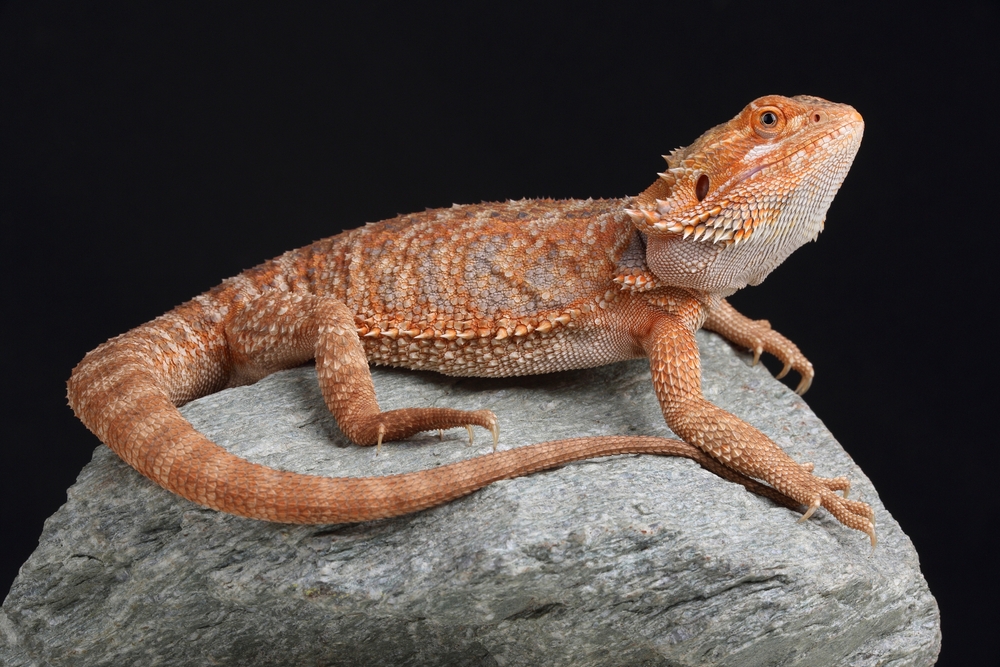About
#Reptile
The blue-tongue skink is a robust, ground-dwelling lizard native to Australia, with some populations found in parts of New Guinea and Indonesia. It is best known for its distinctive blue tongue, which it flashes as a defense mechanism to startle predators. Calm, slow-moving, and relatively easy to handle, this species is also a favorite among reptile enthusiasts and pet keepers.
Adults typically measure 45–60 cm (18–24 inches) in length, with a thick, sausage-shaped body, short legs, and a wide triangular head. Their smooth, overlapping scales are usually patterned in alternating bands of tan, brown, and black, offering effective camouflage in dry forests, grasslands, and scrublands.
The skink’s blue tongue is its most striking feature. When threatened, it opens its mouth wide, hisses, and displays its bright tongue to deter predators. If that doesn’t work, it may flatten its body and puff up to appear larger.
Blue-tongue skinks are diurnal and omnivorous, feeding on a varied diet that includes insects, snails, flowers, fruits, and leafy greens. Their powerful jaws help them crush hard-shelled prey like beetles and snails. In captivity, they adapt well to a balanced diet of proteins and vegetables.
Unlike many reptiles, this species is viviparous, meaning it gives birth to live young rather than laying eggs. Females give birth to 10–20 well-developed offspring that are fully independent shortly after birth.
Their temperament is generally docile, making them ideal for educational use and home care. While they can hiss or puff up when alarmed, they rarely bite and often become quite tame with regular interaction.
The blue-tongue skink’s scientific name is Tiliqua scincoides, and it belongs to the family Scincidae.
Threatened:
Extinct
Critically Endangered
Endangered
Vulnerable
Near Threatened
Least Concern



































































